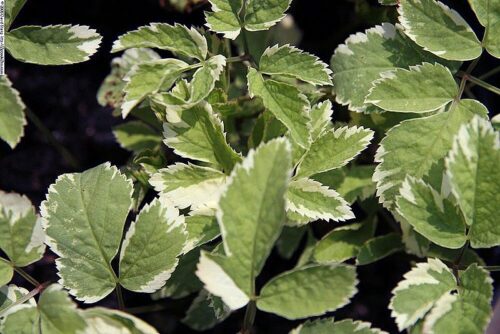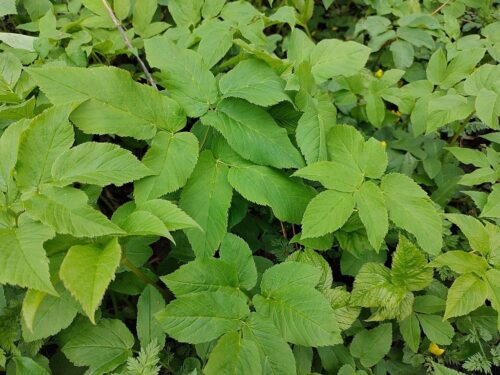Ground elder is a perennial that grows to a maximum height of + 80 cm. The plant multiplies via underground runners.
Also known as:
Bishop’s weed
English masterwort
Goutweed
Herb gerard
Ground elder – Aegopodium podagraria – belongs to the umbelliferae family (Umbelliferae). A group of aromatic plants with hollow stems. It is a perennial that grows to a maximum height of + 80 cm. The plant multiplies via underground runners. These rhizomes are difficult to remove. White umbels appear from May to early August.
Habitat
Ground elder grows on moist, nutrient-rich soils in partial shade and is common in Europe, except in the warm regions around the Mediterranean. You can find ground elder in hedges, roadsides, field edges and in shady spots in the (vegetable) garden.
Control
Because ground elder grows proliferating, it is considered an undesirable plant (weed). It is difficult to control: ground elder is one of the persistent weeds. The root suckers are everywhere and preferably between those of other plants and are therefore difficult to reach. Pieces of roots left behind after a hoeing grow easily again. Manual removal or mechanical (hoeing and milling) often do not work.
Pouring hot water, with or without a dash of vinegar, kills the plant. Repeat this if the ground elder does come back to life. This works for a single plant; larger superficial demands a different solution. The crowding of ground elder by other ground covers – pennywort (Lysimachia nummularia), for example, is one of them.
Covering the soil with invasive ground elder with black foil is not attractive, but it does work: the plants no longer get any light and slowly die. It can take a while, sometimes up to two years before the ground elder has disappeared.
Ground elder is non-toxic, contains, among other things, vitamin C, calcium, potassium and magnesium. Ground elder is edible, the leaves become like spinach prepared. It can also be dried and then it looks a bit like parsley.

There is a garden variety of ground elder: Aegopodium podagraria ‘Variegatum’, this hardy variety has variegated leaves, is less invasive than the wild species and grows to a height of about 50 cm.

